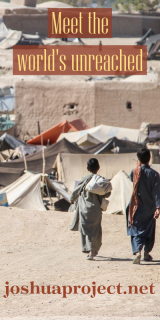Avoiding the “Church Development” Syndrome

The Church of Pentecost was begun in West Africa before the middle of the 20th century. It grew without the unhealthy dependency on outside resources that sometimes characterizes mission-established churches. This church went through growing pains in the early years but avoided getting bogged down in its own development. They reached beyond Ghana and have planted churches in 69 other countries with an estimated 1.5 million members in over 13,000 assemblies. In 2007 more than 200,000 came to Christ as a result of their outreach efforts. All of this is to show that churches do not need to be paralyzed by unhealthy dependency on outside funding.
In successful church-planting, there are three important stages: 1) initial church-planting; 2) church development; and 3) mobilization. Each phase has its own challenges and rewards when done appropriately.
The initial church-planting phase can be rapid or prolonged, joy-filled or difficult. The gospel seed is sown, and when the soil is fertile, it takes root in the hearts of those who become believers. I had the privilege of being part of several new church-planting efforts when I was a missionary in Central Africa. I know how rewarding it can be. But seeing the church come into being is only the first phase.
Church development is the next step after the church is planted. This phase has the potential to affect what the church will be like for many years to come. During this stage, hopefully, the church will learn how to develop its own resources, not just to meet their own needs, but for the purpose of multiplication. Unfortunately, sometimes newly-planted congregations fall into what missiologists call the “syndrome of church development.” This happens when their resources are consumed on themselves with little or nothing left over for outreach and reproduction. This results in a “maintenance mentality” that leaves the church focused inward — perhaps for generations. The church development phase, however, does not need to be an end in itself; it can be an important stepping-stone to effective outreach. Among mission-established churches, too often, the church development phase is funded by outside resources. Church development in itself is not bad, but getting bogged down in it can paralyze a congregation or denomination.
Mobilization is the third step in the process of healthy church-planting. Nothing does more to advance the spread of the Christian movement than for a congregation to discover the reward of mobilizing its own people for ministry. This is a natural step for those filled with the Spirit of God and willing to share the Good News. One of the hindrances to mobilization is getting stuck in the syndrome of church development. This means that instead of mobilizing local resources, congregations become dependent on the resources of others — resources that may have been given for the spread of the gospel, not for maintaining congregations already planted.
When congregations become victims of the syndrome of church development, members become “dependents” rather than “soldiers” in God’s expanding army. As I have written elsewhere, they are unable to join the battle on the front lines and end having to be carried along. Every effort must be made to encourage the mobilization of people and resources rather than have them consume those resources on themselves.
The first phase (church-planting) is characterized by a moving of the Holy Spirit among nonbelievers. The second phase (church development) is the time to build a solid base strong enough to support outreach. The third phase (mobilization) is characterized by believers energized by “going” and “growing.” Nothing does more for the health of the church (and the excitement of its members) than being part of an outreach ministry blessed and nurtured by the presence of the Holy Spirit. The growth of the Church of Pentecost in West Africa and around the world is an example for us all.
One can see how a church is doing by examining the congregational budget. Are resources primarily being used for church development or for mobilization? How would you rate your own congregation? How much time, energy and other resources are being used for church development and how much for mobilization? The need to mobilize believers should motivate all of us to do God’s work around the world. We cannot be satisfied just to help the church maintain itself. That can be expensive and often leads to long-term dependency.
To learn more on this topic, see chapter 9 of When Charity Destroys Dignity: Overcoming Unhealthy Dependency in the Christian Movement, available through World Mission Associates and through William Carey Library.








comments